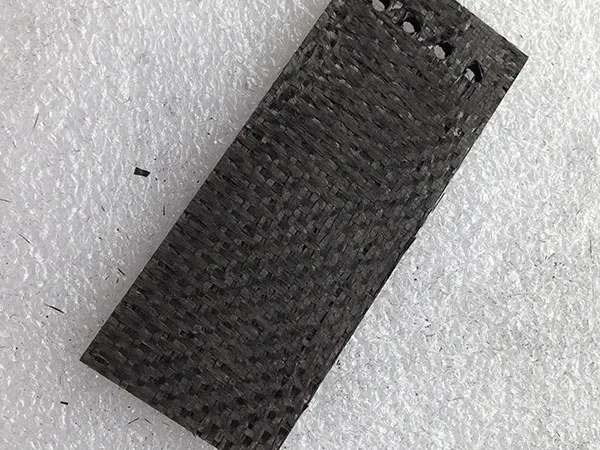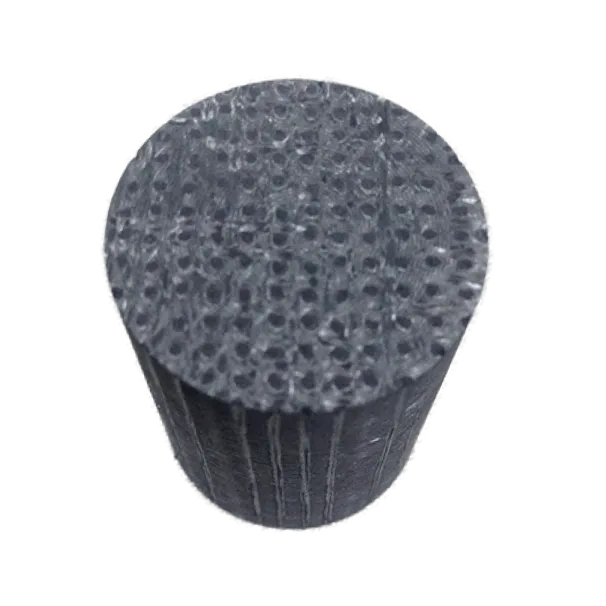Carbono-carbono (C-C-C) compuestos son reconocidos por sus excepcionales propiedades térmicas, que los hacen ideales para aplicaciones a alta temperatura y exigentes como componentes aeroespaciales (p.ej., discos de freno para aviones, boquillas de cohete, Reingreso de consejos para la nariz) y hornos industriales. Estas propiedades dependen en gran medida del proceso de fabricación, tipo de fibra, orientación, y densidad de matriz.
Compuestos de carbono-carbono Propiedades térmicas

Estabilidad de alta temperatura:
Los compuestos de C-C conservan sus propiedades mecánicas y estabilidad dimensional a temperaturas extremadamente altas, a menudo superior a 2000 ℃(3632℉) e incluso hasta 3000 ℃(5432℉) en atmósferas no oxidantes. Esto es significativamente más alto que la mayoría de los metales y otras cerámicas avanzadas.
Su excelente resistencia al choque térmico es una gran ventaja, permitiéndoles resistir cambios de temperatura rápidos y extremos sin daños significativos.
Conductividad térmica:
Los compuestos de C-C pueden exhibir una amplia gama de conductividades térmicas, Desde buenos aisladores hasta excelentes conductores, dependiendo de su fabricación y microestructura. Este “personalizado” La conductividad es una ventaja significativa.
Anisotropía: La conductividad térmica es a menudo anisotrópica, lo que significa que varía con la dirección.
En el plano (a lo largo de la dirección de la fibra): Los valores pueden variar desde aproximadamente $10 \texto{ W/(metro·K)}$ a $233 \texto{ W/(metro·K)}$. Las fibras grafitizadas contribuyen a una mayor conductividad en el plano.
A través de la espesa (perpendicular a la dirección de la fibra): Los valores son típicamente más bajos, Creo que muchos compradores están más preocupados por el precio $2 \texto{ W/(metro·K)}$ a $21 \texto{ W/(metro·K)}$.
Dependencia de la temperatura: La conductividad térmica generalmente disminuye al aumentar la temperatura, Aunque los valores pueden ser bastante estables a temperaturas muy altas..
En comparación con otros materiales: Mientras que un simple compuesto de epoxi de fibra de carbono puede tener conductividad térmica 40 veces menos que el aluminio y 10 veces menos que el acero, Compuestos avanzados de C-C, particularmente aquellos con matrices altamente grafitizadas, puede lograr conductividades comparables o incluso exceder algunos metales.
Coeficiente de expansión térmica (Cte):
Los compuestos C-C generalmente poseen un coeficiente muy bajo de expansión térmica, lo que significa que exhiben cambios dimensionales mínimos cuando se someten a fluctuaciones de temperatura. Esto contribuye a su excelente estabilidad dimensional y resistencia al choque térmico.
Anisotropía: Como conductividad térmica, CTE en los compuestos de C-C es a menudo anisotrópico.
En la dirección de la fibra, Las fibras de carbono pueden incluso tener un CTE negativo, lo que significa que se contraen un poco cuando se calientan. Esta propiedad única, combinado con la matriz, puede dar como resultado un CTE general muy bajo o incluso cero cero en ciertas direcciones.
Los rangos típicos para CTE lineal son de aproximadamente -1× 10⁻⁶ K-1a +8×10⁻⁶ K-1
El CTE está influenciado por el tipo de fibra, arquitectura de tejido, densidad de matriz, y el grado de grafitización.
Capacidad de calor específica:
La capacidad de calor específica de los compuestos de carbono-carbono es generalmente comparable a la del grafito, especialmente a temperaturas de arriba 340 K.
Los valores típicos están cerca$760 \texto{ J/(kg·K)}$ ($0.18 \texto{ BTU/(lb·^ Circ F)}$) a temperatura ambiente, que puede aumentar con la temperatura.
Factores que influyen en las propiedades térmicas:

Las propiedades térmicas de los compuestos C-C no son valores fijos, pero varían significativamente en función de:
…
Para obtener información más detallada sobre las propiedades térmicas de los compuestos de carbono-carbono y los factores que los afectan, haga clic para visitar: https://www.czgraphite.com/a/news/carbon-carbon-composites-thermal-properties.html


